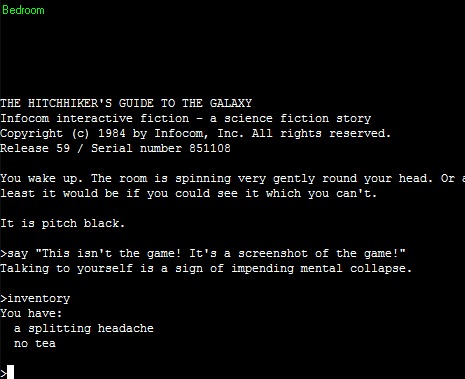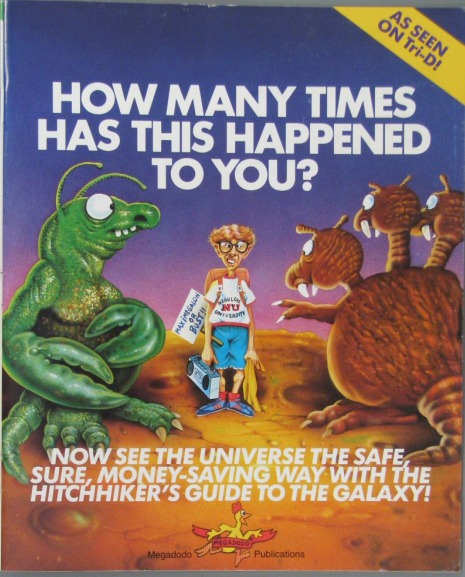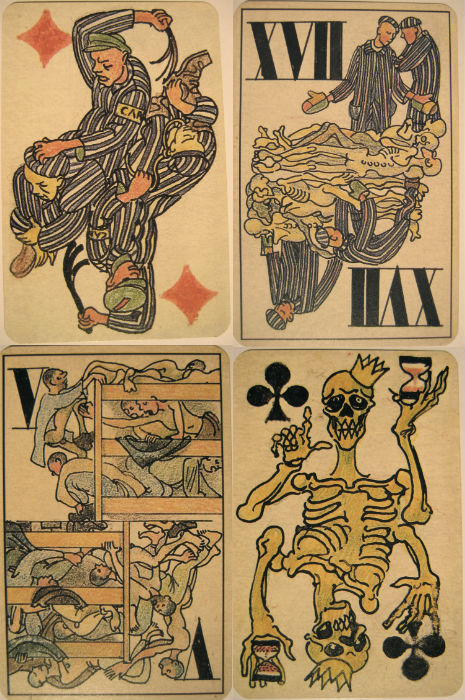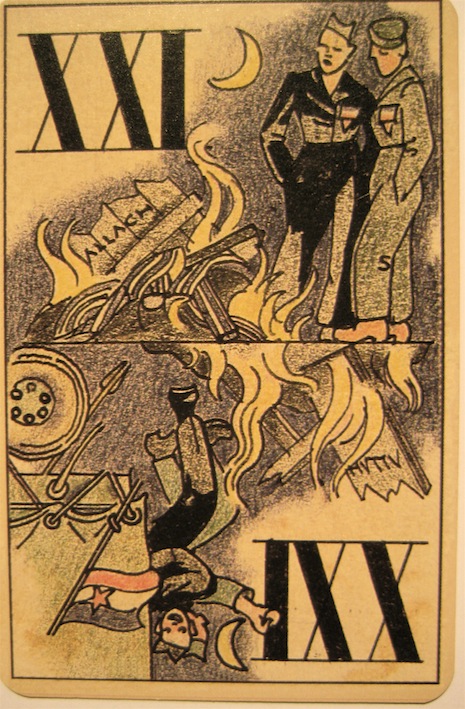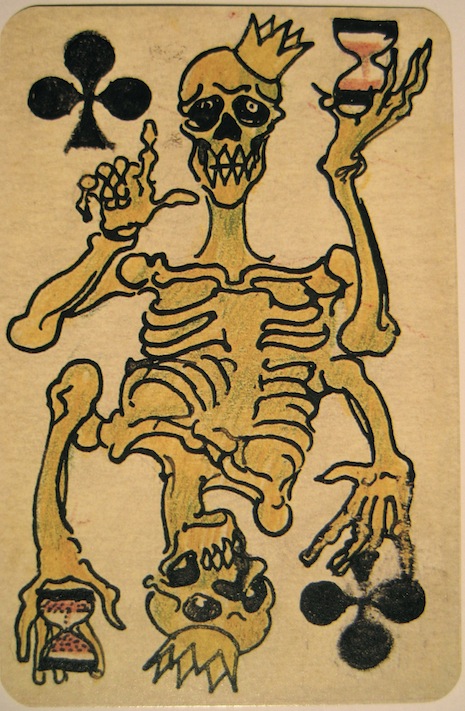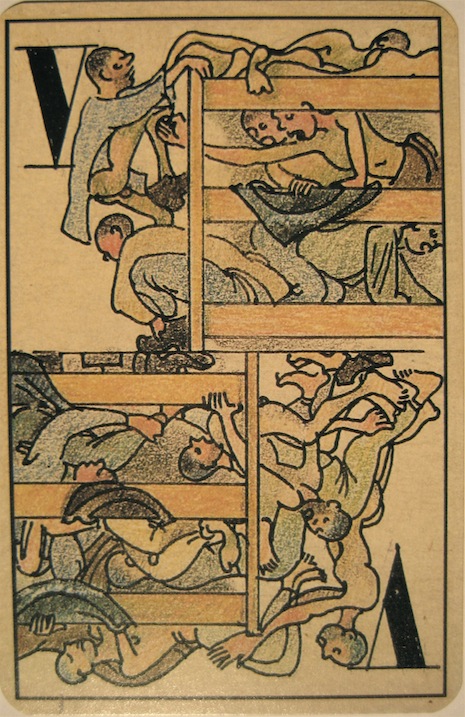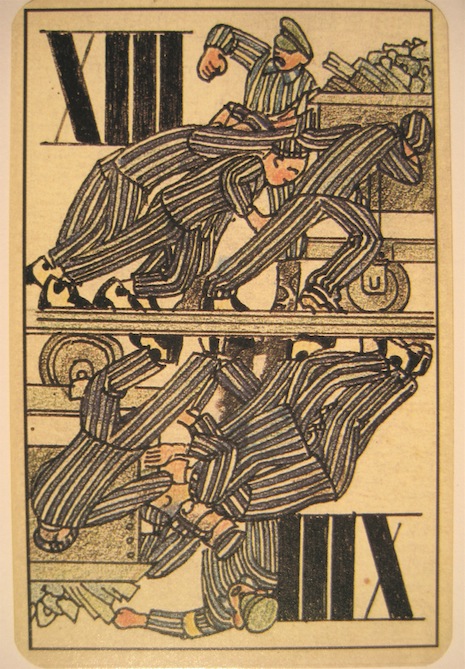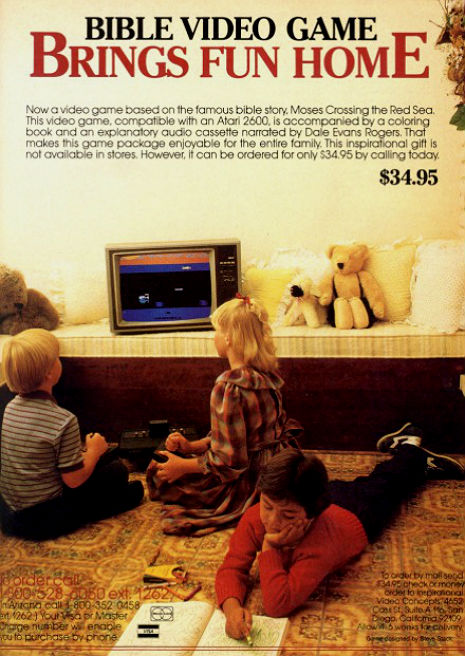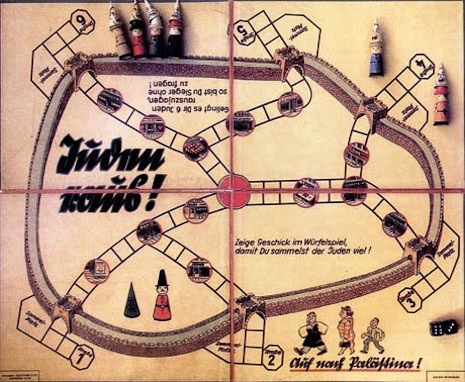
Who would have guessed that the Holocaust wouldn’t make for a perfectly peachy board game for the little German children of the Third Reich? As it turns out, getting rid of all the Jews just isn’t that much fun. (Of course, given sound game design principles, just about anything can be made fun, but foregrounding one’s own small-minded intolerance and hatred and desire to exile a minority group is probably not the first step in that creative process.)
In 1935 the Nuremberg Laws were passed in Germany—these laws codified the desire of the Nazis, at a minimum, to segregate Jews from all areas of public life. In effect the laws—which communicated the idea, “You’re not wanted here!”—were a powerful argument for accelerated out-migration. Those Jews who could afford it and who also avoided the tragic tendency to rationalize away the hatred directed towards them, got the point, and left if they hadn’t already done so. As the years ticked by, the urgency of getting some kind of exit visa would only increase.
A year after the Nuremberg Laws, a company called Günther & Co. released a Parcheesi-style board game; its title was one of the ugliest phrases in human history—Juden Raus! The title is best translated as, “Jews, Get Out” or possibly “Get Rid of the Jews” depending on your conception of agency, and is the most succinct possible expression of the official German attitude towards Jews under the Third Reich. (The word “official” is important here. Anti-Semitism was certainly popular enough to become a key pillar of the ideology of the state, but just as Tea Partiers don’t like Obamacare, not all Germans were equally afflicted by the disease.)
236.jpg)
“Juden Raus! Das Neue Gesellschafts-Spiel” (“Out with the Jews! The Game of the New Society”)
In the game, young Germans across the Reich were encouraged, in what practically seems a parodic Firesign Theatre-style intervention, to move the six “Jew” game pieces around the board in such a way as to secure them on spots outside the metaphorical “wall” of the German state such that they would be transported “Auf nach Palästina!” (Off to Palestine!). Each game piece came with a conical “dunce”-style cap with a grotesque Jewish caricature on it. On the board itself were two little pieces of doggerel that helped explain the goal of the game: Zeige geschick im Würfelspiel, damit du sammelst der Juden viel! (“Show skill in this dice game, so that you gather up all the Jews!”) and Gelingt es Dir 6 Juden rauszujagen, so bist Du Sieger ohne zu fragen! (“If you succeed in chasing six Jews out, you’re the winner, without a doubt!”) At a guess, the inherently cooperative nature of something like the Holocaust interferes with the competitive imperatives of a good board game. In other words, how did the game work, exactly? If I exile three Jews and you exile just two, then I win? It doesn’t quite make sense.
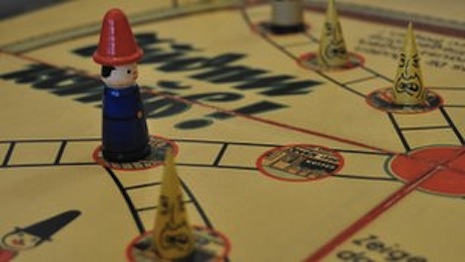
“Off to Palestine with you, little Jew!”
Surprisingly, the best evidence we have suggests that the Nazis themselves didn’t like the game. Why? Because it had the effect of trivializing such the, er, “noble” task of purifying Germany. In one of the most remarkable bits of prose I have ever read, the Nazi newspaper Das Schwarze Korps in December 1938 published a brief review in which they sharply criticized the game.
This invention ... is almost a punishable idea, perfectly suitable as grist to the mills of hate of the international Jewish journaille, who would show around such a piece of mischief as a proof for the childish efforts of the nazistic Jew-haters with a diabolic smirk, if it would appear before her crooked nose.
-snip-
Jews out! yes of course, but also rapidly out of the toy-boxes of our children, before they are led into the dreadful error that political problems are solved with the dice cup.
In a recent academic paper about the game, which they aptly label “History’s most infamous board game,” Andrew Morris-Friedman and Ulrich Schädler get in the final word:
What insights are achieved from “Juden Raus!” about Nazi culture? It is hard to imagine a family sitting at a table playing a game that taught racial hatred. Yet it seems there were people like Rudolf Fabricius who imagined that some families would do just that. Fabricius was one of those mere supporters who thought to make some profit by following in the wake of Nazi anti-Semitic propaganda. Today most people react with disbelief or disgust when informed of the game’s existence. “Juden Raus!” shows that after decades of propaganda, anti-Semitism was so deeply rooted in German society in the 1930s, that someone thought it would be a good subject for a children’s game. Racism is present in many board games, but “Juden Raus!” is unique in its portrayal of how racism manifests itself in society and is a terrifying example of the banality of evil.
In my research for this post, I stumbled across a more contemporary attempt to depict the full horror of the Holocaust in the form of a board game. Brenda Brathwaite’s 2009 game Train turned the task of loading little yellow people onto trains for some undisclosed final destination, with the reveal, late in the game, that the destination is actually Auschwitz, although the game’s suitably grim visual design gives the punchline away well before that point is attained.
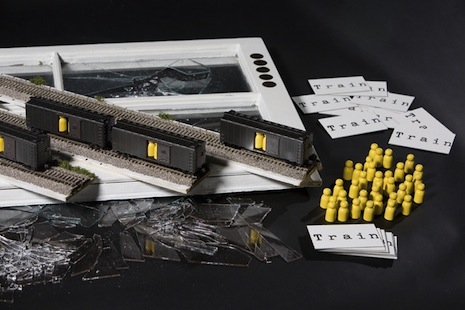
Here’s a 2009 video from The Wall Street Journal about Brathwaite’s game Train:
Posted by Martin Schneider
|
03.21.2014
02:09 pm
|
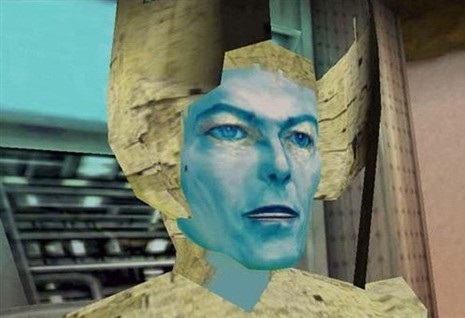






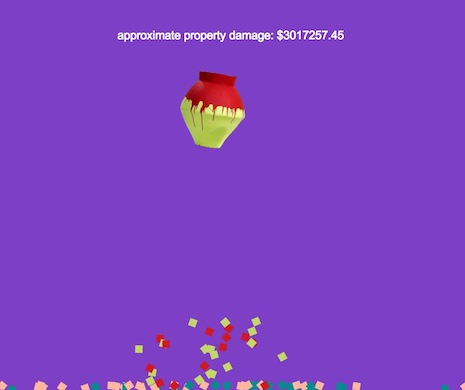
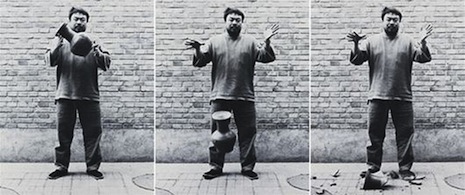



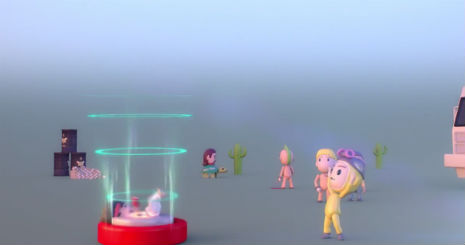
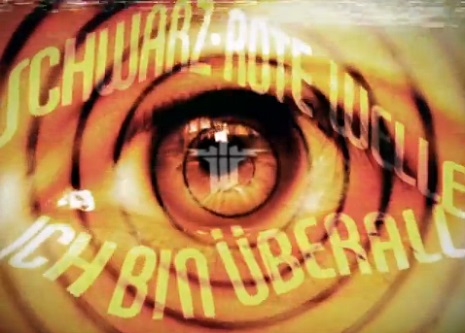

236.jpg)



